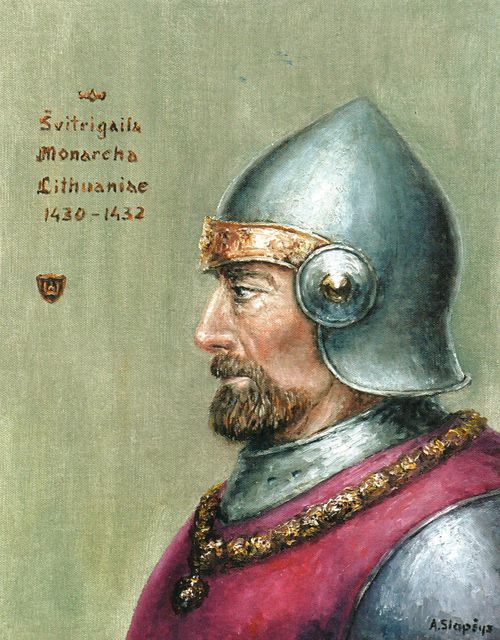Those who have stayed in centuries
An exhibit dedicated to our common period of history with Lithuania
Native resident of Lutsk or a person who has been living in the city for a long time can be distinguished from other by the following feature: local residents call their famous castle which has become one of seven wonders of Ukraine “Lubart’s castle,” not just Lutsk castle. The names of Lubartas, Vytautas, Jogaila, and Svitrigaila are very close and dear to the residents of Volyn, because this is the history of our land. But at the same time this is the history of Lithuanians, because for a certain period of time the Volynian lands were part of the Grand Duchy of Lithuania, and namely Prince Lubartas annexed them to this super state. Old Luchesk was the winter capital of the principality, and Trakai, which is in modern Lithuania, – the summer residence. Our castles are alike, but historian from Vilnius Tomas Baranauskas says that the Lutsk castle is more authentic, because the castle in Trakai was raised from ruins.
To Lutsk the Lithuanian delegation came at the invitation of the local council, which realizes the international cultural project “The Way of Gediminas” (Lubartas, Vytautas, and Jogaila are descendants of the Grand Duke Gedimin who turned the then Lithuania into a super state). The Museum of Art presents the exhibit of works of Arturas Slapsys “Portraits of monarchs and well-known figures of the Grand Duchy of Lithuania of 12th-15th centuries.” It was interesting to observe the reaction of the guests of the city which was written in their history not in one line. They visited the service in the church built in the 12th century, John the Apostle Church, which is the oldest Orthodox church of Lutsk, its oldest stone building; of course, today only the fundament and part of pillars have been left from the church, and it is the place of archeological dig. But the grace which is almost 1,000 years old, and which makes one’s skin crawl, according to artist Arturas Slapsys, remains. Actually, the Lutsk castle was the venue where in 1429 the well-known congress of European monarchs, the prototype of the European Union, was held; the guests were welcomed by Prince Vytautas, referred to by Lithuanians as Great Vytautas. Inga Baranauskiene, historian, writer, and translator, who wrote together with her husband Tomas a historical reference to every portrait presented at the exhibit, says that Lithuanians know there is a war in Ukraine and feel responsible before Ukraine: “You defend the state border of Lithuania as well, actually the European border.”
Inga Baranauskiene graduated from the Institute of International Relations and Political Sciences of the Vilnius University. History is her old-time love. She says that the collection of portraits presented today in Lutsk includes the portraits of monarchs and well-known people of Lithuania over 300 years of its history, with both positive and heroic personalities, and, according to her own expression, “scum,” who were in power, being presented. Many personalities are part both of the history of Lithuania and the history of Ukraine. For example, Semen Omelkovych, Slutsk Principle, Kyiv Prince, who conquered the last territories for the Grand Duchy of Lithuania. For the artist Arturas Slapsys it was important to convey the character of a person, judging by his or her actions in history, and he succeeded.
The launch of the exhibit was an interesting theater show. The actors of Volyn Academic Oblast Theater of Music and Drama showed the scene of Lubartas’s taking the prince throne in Luchesk, because he was christened Dmytro. Vytautas’s role was performed by the well-known performer of this role in Lithuanian films Donatas Mazurkevicius. The first tour was held by artist Arturas Slapsys and owner of the collection, entrepreneur Antanas Gedvilas, who funded the collection. Remarkably, Lithuanians have brought to Lutsk 15 students of history from Vilnius, because they think that young people should visit the places where the history of their state was created.
Author
Natalia MalimonSection
Culture





